Moth Infestation Solutions & Prevention Tips
Moths are a diverse group of insects belonging to the order Lepidoptera, which also includes butterflies. They are characterized by their typically duller colors and feathery antennae, distinguishing them from their more vibrant butterfly relatives. Moths come in a wide range of sizes, shapes, and colors, with some species displaying intricate patterns on their wings. They are primarily nocturnal creatures, being most active during the night, and are attracted to sources of light. Moths play important roles in ecosystems as both pollinators and prey for various predators. While some species are considered pests due to their larval stage damaging crops and textiles, many others contribute to the ecological balance and exhibit fascinating adaptations for survival. Moths are a vital component of the natural world, adding to the beauty and complexity of our environment.
The different species of moths
The most common species of moths can vary by region and habitat, but some widespread and frequently encountered moth species around the world include:
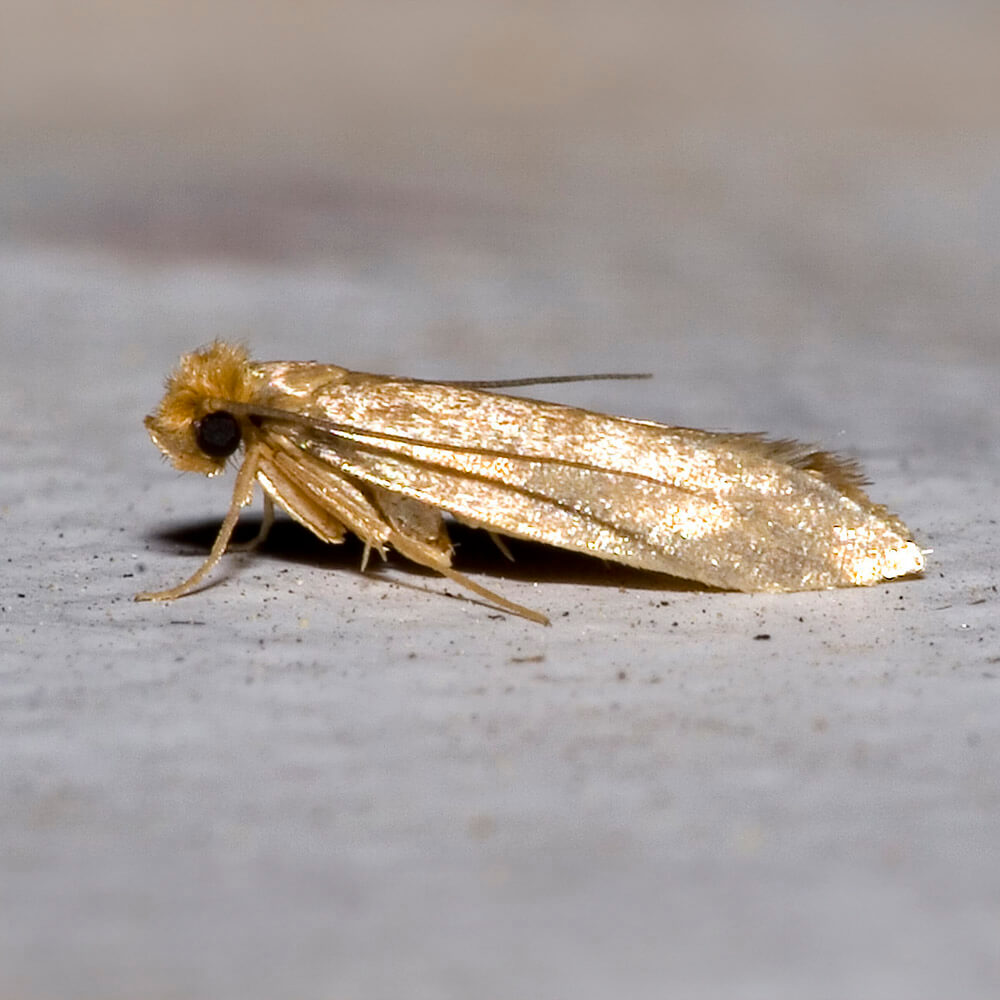
Common Clothes Moth (Tineola bisselliella)
These small moths are notorious for infesting and damaging natural fibers like wool and silk in clothing and textiles.
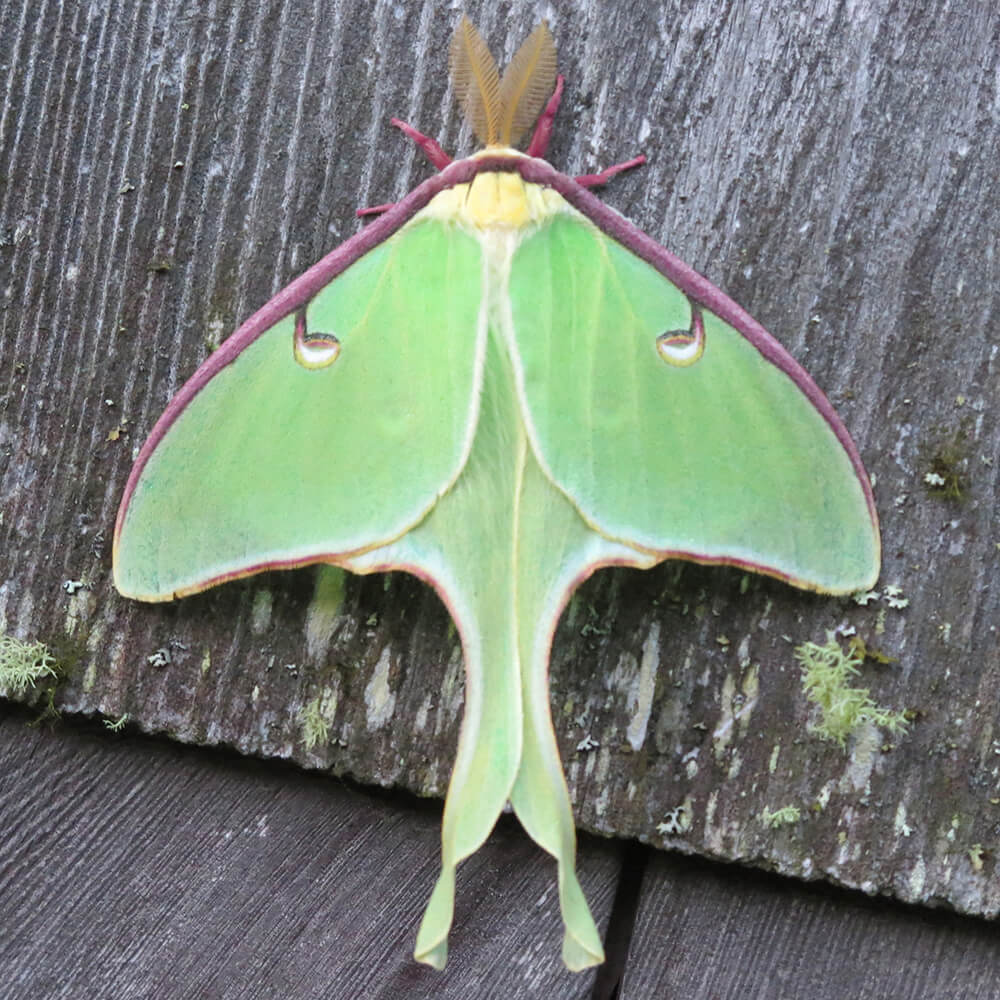
Luna Moth (Actias luna)
Known for their stunning green wings and long tails, Luna moths are large and beautiful moths found in North America.

Gypsy Moth (Lymantria dispar)
Considered an invasive species in some regions, these moths have voracious caterpillars that can defoliate trees and become a significant forest pest.
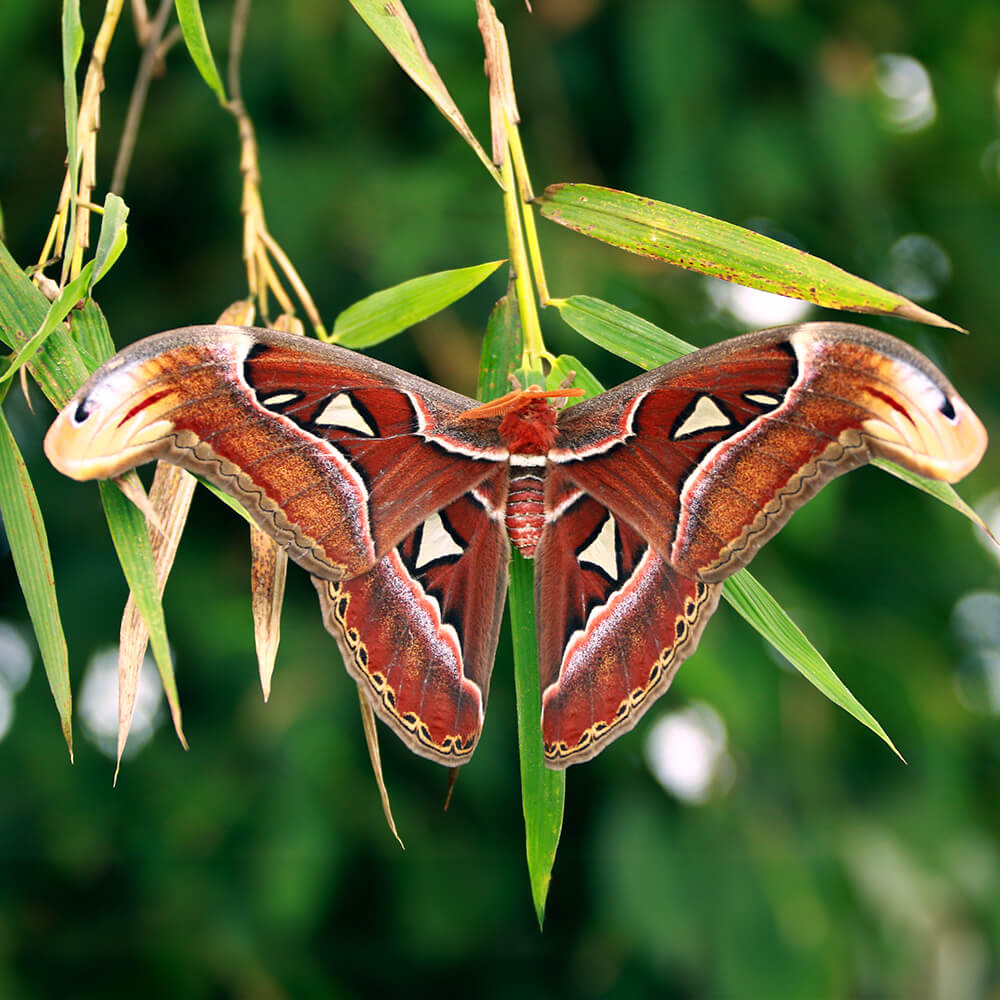
Atlas Moth (Attacus atlas)
Among the largest moths in the world, Atlas moths are native to Southeast Asia and are famous for their enormous wing surface area and unique patterns.
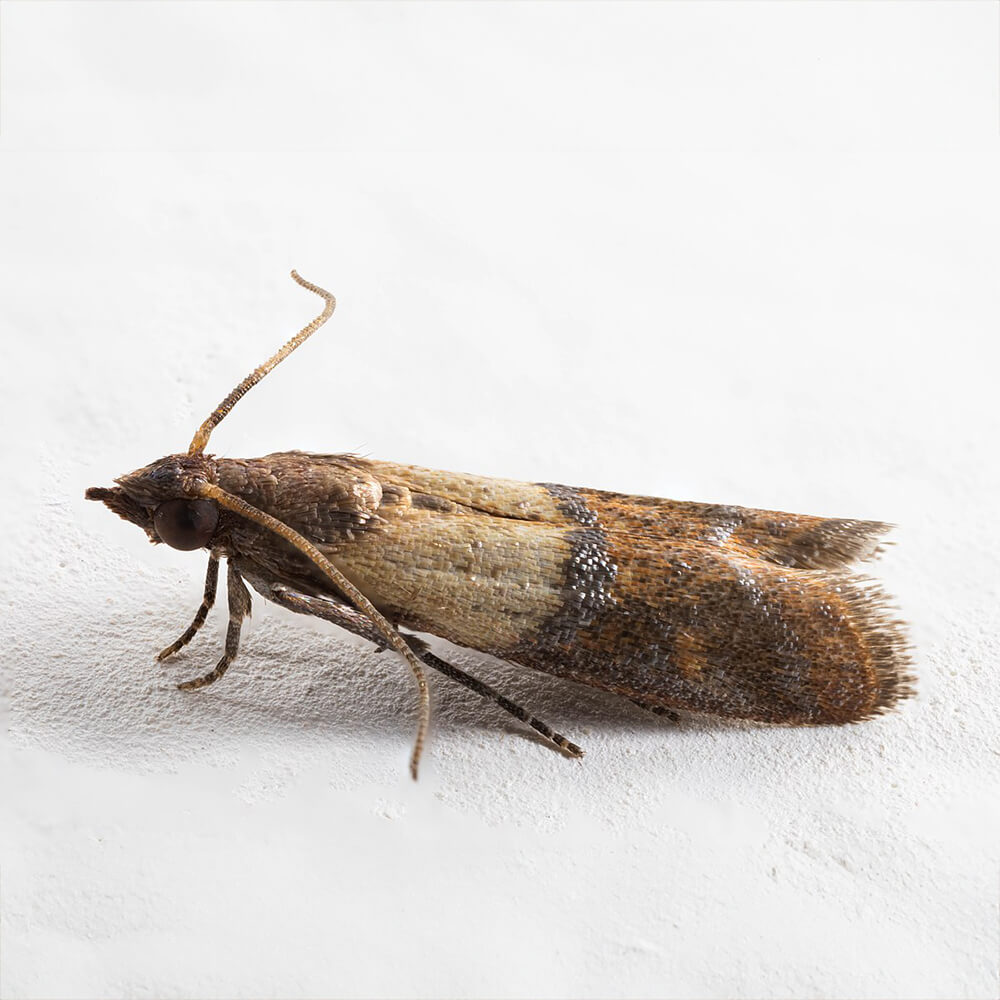
Indian Meal Moth (Plodia interpunctella)
Often found in stored grains and pantry items, these moths are considered pantry pests and can be a nuisance in homes.

White-lined Sphinx Moth (Hyles lineata)
These are powerful fliers with distinctive white lines on their wings and are commonly seen throughout North and South America.
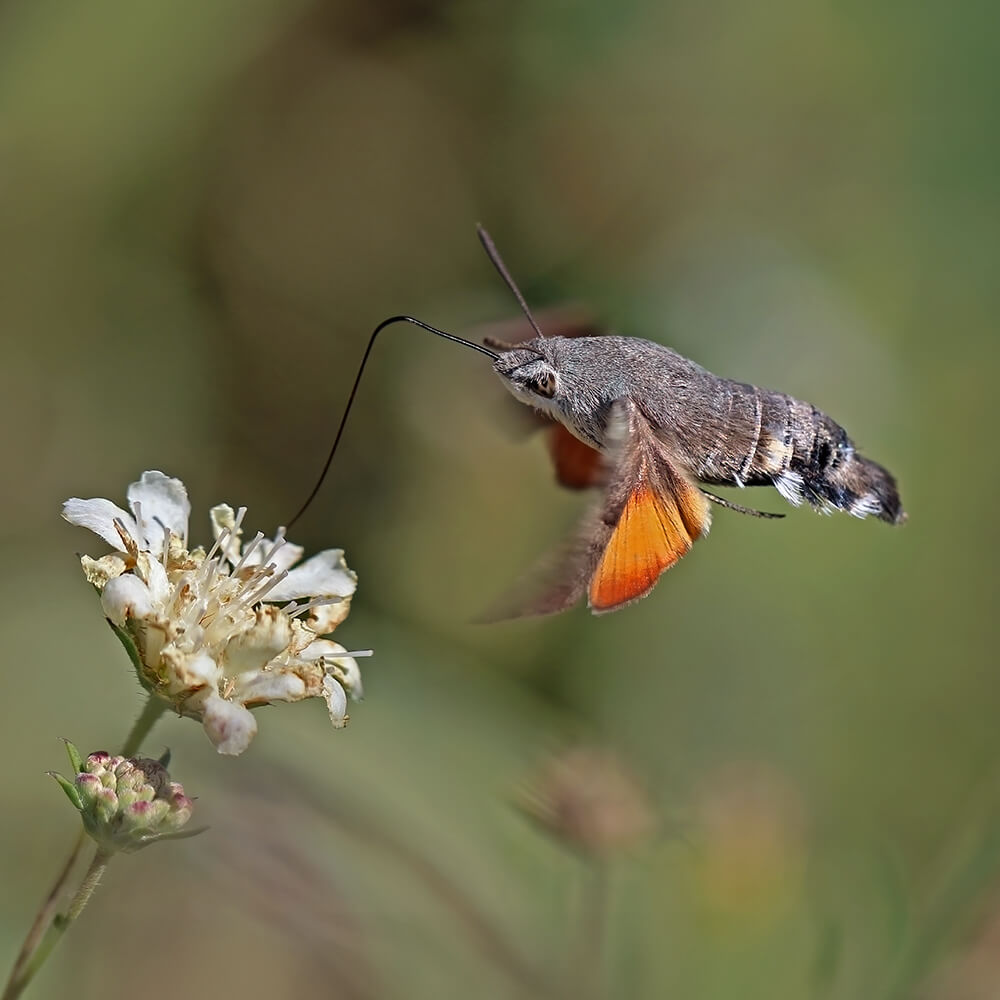
Hummingbird Hawk-Moth (Macroglossum stellatarum)
Resembling a miniature hummingbird in flight, these moths are known for their rapid wingbeats and are found in various parts of the world.
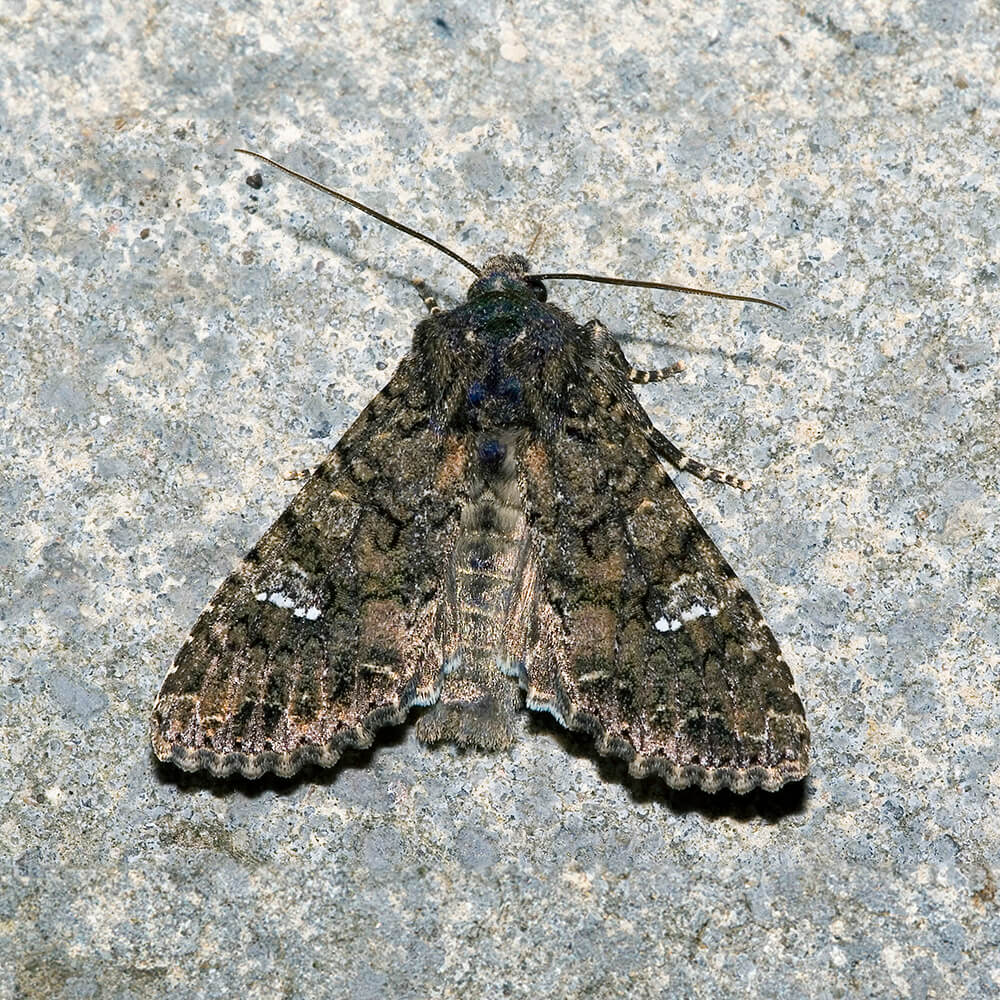
Cabbage Moth (Mamestra brassicae)
These moths are prevalent in gardens and agricultural fields, where their caterpillars can be pests on cabbage and other cruciferous vegetables.
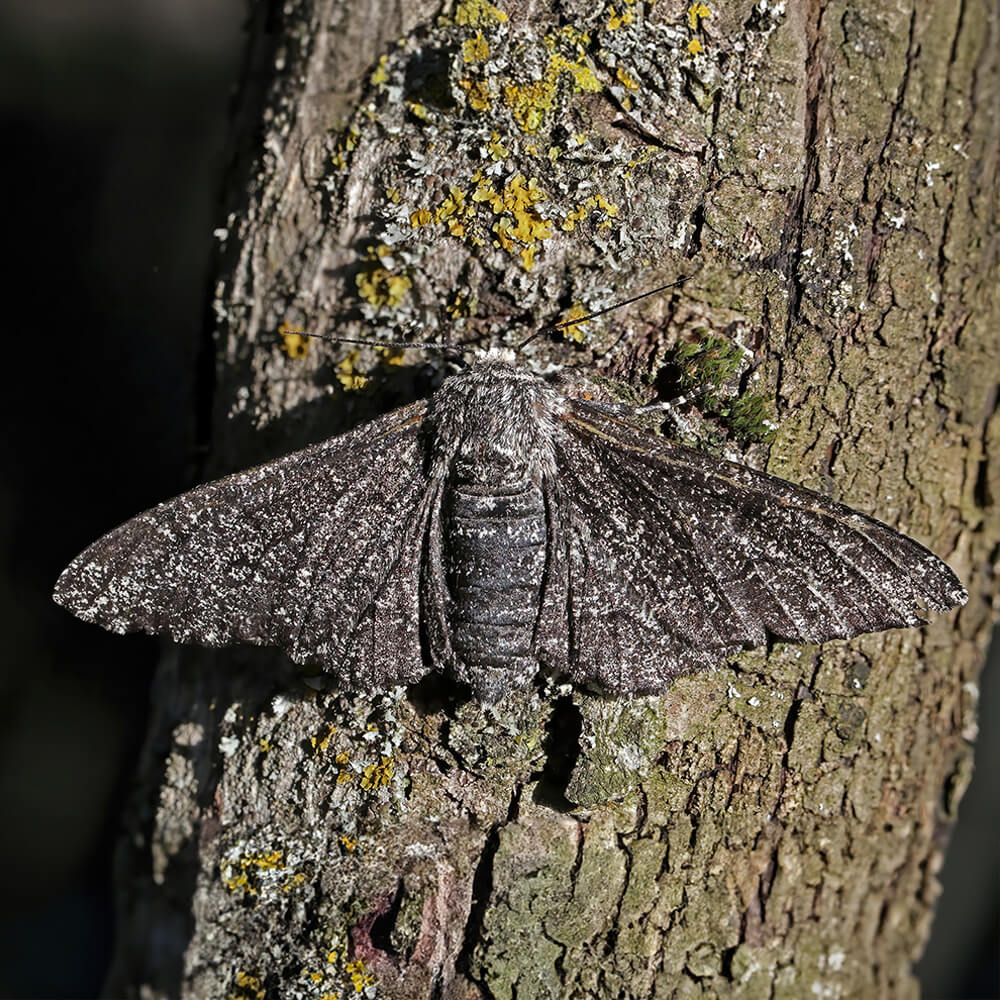
Peppered Moth (Biston betularia)
This species became famous for its role in illustrating natural selection during the Industrial Revolution. The dark form of this moth became more prevalent in polluted areas due to its camouflage against soot-covered trees.

Small Tortoiseshell Moth (Aglais urticae)
Common in Europe, this moth is known for its striking orange and black coloration.
It’s important to note that the prevalence of specific moth species can vary greatly depending on geographic location, climate, and habitat. Moths are incredibly diverse, with over 160,000 described species worldwide, and many more likely yet to be discovered.
Moths belong to the order Lepidoptera, which also includes butterflies. There are over 160,000 species of moths worldwide, making them much more diverse than butterflies.
The life cycle of moths
The life cycle of a moth is a fascinating journey, marked by distinct stages of development. Understanding this cycle sheds light on the remarkable adaptability of these insects to their environments.

Egg Stage
The life cycle of a moth begins with the laying of tiny, often spherical eggs. These eggs are typically deposited on or near the food source of the future caterpillar, ensuring a ready supply of nourishment for the emerging larva.

Pupal Stage
The caterpillar undergoes a remarkable transformation during the pupal stage. It wraps itself in a protective cocoon or chrysalis, inside which it undergoes a process of metamorphosis. During this period, the entire body structure is reorganized, and the caterpillar transforms into an adult moth.
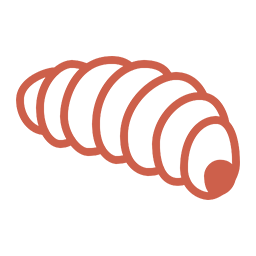
Larval Stage
Upon hatching, the moth larva, known as a caterpillar, embarks on its feeding frenzy. This stage is marked by rapid growth and an insatiable appetite. Caterpillars are specially adapted for their feeding habits, often sporting chewing mouthparts that allow them to devour plant material with ease. As they grow, they periodically molt, shedding their old exoskeleton to accommodate their expanding bodies.

Adult Stage
Finally, the fully developed adult moth emerges from the chrysalis. The adult moth is characterized by its delicate wings, often adorned with intricate patterns. Its primary goal at this stage is to reproduce and ensure the continuation of its species. Moths are typically nocturnal creatures, and they play essential roles in pollination and as a vital food source for nocturnal predators.
It’s important to note that the life cycle of a moth can vary in duration and appearance depending on the species. Some moths may complete their life cycle in a matter of weeks, while others may take months or even years. Regardless of the duration, the moth’s life cycle exemplifies the beauty and complexity of nature’s processes.
Moths come in various sizes, from tiny species with wingspans of just a few millimeters to large species with wingspans of over a foot.
The seasons most conducive to moths
The prevalence and activity of moths are significantly influenced by seasonal changes. Different seasons offer varying conditions that are conducive to moth activity, each with its unique characteristics:

Spring
As temperatures begin to rise and days lengthen, spring marks the awakening of moth populations. Many overwintering moth species become active during this season. In early spring, moths seek nectar from the blooming flowers and may engage in mating activities. This season is particularly important for the survival of some moth species as they lay their eggs, initiating a new generation.

Autumn
As summer transitions into autumn, moth activity tends to decrease. Cooler temperatures and reduced daylight hours signal the approach of winter, leading some moth species to go into a state of dormancy or hibernation. However, some late-season moths continue to be active and may be seen seeking food and mates during the early part of autumn.
Summer
Summer is the peak season for moth activity in many regions. Warm temperatures and longer daylight hours provide ideal conditions for moths to thrive. During these months, moths are often seen fluttering around gardens and other outdoor spaces, seeking nectar from a variety of flowering plants. Many moth species, including the well-known Luna and Sphinx moths, are most active on summer nights, making them a common sight around outdoor lights.
Winter
Winter is generally a less conducive season for moths. Most moth species have adapted to cold weather by either hibernating in a sheltered location or overwintering as eggs, larvae, or pupae. During this season, moths are less visible, and their activity is limited. However, some hardy species may still be active in mild winter climates, seeking sustenance and reproduction opportunities.
It’s important to note that the specific timing and conditions conducive to moth activity can vary depending on the region and climate. While the warmer months of spring and summer are typically the peak seasons for moth sightings, moths have evolved to adapt to a wide range of environmental conditions, allowing them to thrive in diverse habitats throughout the year.
The adult stage of a moth’s life is often short-lived, with some species living for only a few days to a few weeks. Their primary goal during this time is to mate and reproduce.
Where do moths come from, their habitat
Moths are a diverse group of insects found in a wide range of habitats across the globe. Their habitat preferences can vary greatly depending on the species, but they are generally adaptable and can thrive in various environments. Here are some common habitats where moths come from:

Forests
Many moth species are associated with forested areas. They can be found in both temperate and tropical forests, where they play essential roles in the ecosystem as pollinators and as a food source for birds and other wildlife. Some moths have specific preferences for certain tree species or altitudes within the forest.

Gardens and Urban Areas
Moths are not limited to natural habitats and can often be found in urban and suburban areas. Gardens, parks, and green spaces offer a variety of nectar-rich flowers and plants that attract moths. Streetlights and outdoor lighting can also draw moths at night.

Agricultural Fields
While some moths are considered agricultural pests due to their larval stage damaging crops, others are beneficial pollinators. Moths can be commonly found in and around agricultural fields, especially during the growing season when flowers are in bloom.

Mountainous Regions
Moths can inhabit high-altitude mountainous regions, where they have adapted to the unique environmental challenges of cold temperatures and low oxygen levels. These moths often have specialized features for surviving at high elevations.

Grasslands
Moths are prevalent in grasslands, meadows, and prairies. These open habitats provide abundant nectar sources from wildflowers, making them attractive to various moth species. Additionally, caterpillars of certain moths feed on grasses and other herbaceous plants found in these environments.

Wetlands
Some moths inhabit wetlands, marshes, and swamps. These areas provide specific host plants and nectar sources that cater to the needs of particular moth species. Moths found in wetlands may have specialized adaptations for these unique environments.

Desert and Arid Regions
Even in harsh desert environments, moths have adapted to survive. Some species are active during the cooler evening hours when temperatures are more tolerable, and they may rely on drought-resistant plants for sustenance.
It’s important to note that the habitat preferences of moths can be highly specific to their individual species, and many moths are highly adaptable, allowing them to colonize various ecosystems. The availability of suitable food plants, climate conditions, and the presence of predators and competitors all play roles in determining where moths are found in nature.
Some moth species, especially those with long proboscises, are important pollinators for night-blooming flowers.
What attracts moth into our homes
Moths are often drawn into our homes by a combination of environmental factors and their natural behaviors. Here are some key factors that attract moths into our homes:
Light
Moths are famously attracted to light sources. They use the moon and stars for navigation, and artificial lights can confuse them. When moths encounter light, they tend to circle it or fly toward it, which is why they are commonly seen around outdoor porch lights or indoor lamps at night.
Moisture and Humidity
Some species of moths are attracted to moisture and high humidity levels. Areas in the home with damp conditions, such as basements, bathrooms, and laundry rooms, may be more appealing to these moisture-seeking moths.
Outdoor Factors
Moths can be attracted to homes from the outside due to the presence of flowering plants, gardens, or other outdoor environments with nectar-rich flowers. They may follow the scent of these flowers or be drawn by the light emanating from the home.
Open Doors and Windows
Moths can easily enter homes through open doors and windows, especially during the evening when they are most active. Once inside, they may become disoriented and attracted to indoor lights.
Food Sources
Moths are attracted to various food sources, and their larvae (caterpillars) are particularly voracious eaters. Pantry moths, such as the Indian Meal Moth, are drawn to stored food items like grains, flour, cereals, and dry pet food. They can infest and contaminate these products, making them a common household nuisance.
Heat and Warmth
Moths, like many insects, are cold-blooded and are more active in warmer conditions. During colder months, moths may seek refuge indoors where the temperature is more comfortable. This is especially true for overwintering species that hibernate through the winter.
Fragrances
Some moths are attracted to fragrances, including perfumes, scented candles, and air fresheners. The chemicals in these products can mimic the scents of flowers, which may confuse moths and lead them indoors.
Breeding and Reproduction
Male moths are known to fly in search of female pheromones to mate. If a female moth has entered the home, males may be attracted indoors, following the scent trail to locate a potential mate.
To reduce moth infestations in homes, it’s important to keep food items properly stored in airtight containers, seal cracks and gaps in the home’s exterior, use screens on doors and windows, and consider using outdoor lighting that is less attractive to moths, such as yellow or sodium vapor lights. These measures can help minimize the presence of moths indoors and prevent infestations.
Most moths are nocturnal, meaning they are active at night. They are often attracted to artificial lights, which can disrupt their natural behavior.
Signs that you have a moth infestation
Identifying a moth infestation in your home is essential for prompt and effective pest management. Here are some common signs that indicate you may have a moth infestation:
Presence of Adult Moths
The most obvious sign is the sighting of adult moths in and around your home, particularly in areas where food is stored. Adult moths are often seen flying near light sources at night.
Cocoons or Pupae
Moth larvae spin silk cocoons or pupate in cracks and crevices near their food source. These pupae may look like small, oval-shaped casings or sacs.
Holes in Clothing or Fabric
Clothes moths, such as the Common Clothes Moth, can damage natural fibers like wool, silk, and fur. If you notice small holes or irregularly shaped patches in your clothing, rugs, or upholstery, it may be a sign of a clothes moth infestation.
Damage to Natural Fabrics
In addition to clothing, moths can also target natural fiber upholstery, curtains, and tapestries. Check these items for signs of damage or the presence of larvae.
Visible Damage
Check stored food items, such as grains, cereals, pasta, and flour, for signs of damage. Moth larvae can leave behind webbing, silk threads, and feces. Infested food may appear clumped together or contain small holes.
Webbing
Some moth species, like Indian Meal Moths, create silk webbing as they feed. This webbing can be found inside food containers and on the surfaces of pantry shelves.
Adult Moth Casings
Clothes moth larvae leave behind small, cylindrical casings made of silk and fibers as they pupate. These casings can often be found in the folds of clothing or tucked away in corners of closets.
Outdoor Moth Activity
If you frequently observe moths congregating around your home’s exterior, they may be seeking entry. Addressing outdoor light sources and sealing gaps in doors and windows can help prevent indoor infestations.
Caterpillars
Discovering caterpillars in your pantry or food storage areas is a clear indication of an infestation. Caterpillars are the larval stage of moths and are often found crawling on or near infested food.
Unusual Odors
Infested food can develop a rancid or musty odor due to the presence of moth larvae and their excrement. Pay attention to any unusual smells coming from your pantry or kitchen.
Shed Larval Skins
As moth larvae grow, they molt and shed their old exoskeletons. Finding these cast-off skins in and around infested areas can confirm the presence of an infestation.
If you suspect a moth infestation, it’s crucial to identify the source and take action promptly. Begin by inspecting and discarding infested food and thoroughly cleaning affected areas. Additionally, consider using moth traps, vacuuming regularly, and storing susceptible items like clothing and food in airtight containers to prevent further infestations. For severe or persistent infestations, professional pest control services may be necessary.
Many moths have evolved intricate patterns and colors on their wings that help them blend into their surroundings. This camouflage helps protect them from predators.
Rooms where moth hide
Moths can hide in various rooms and spaces within your home, primarily seeking out environments that provide suitable conditions for their survival and reproduction. Here are some common rooms and areas where moths may hide:

Pantry or Kitchen
Pantry moths, such as Indian Meal Moths, are notorious for infesting food storage areas. They lay their eggs on dry food items like grains, cereals, flour, and pasta. Moth larvae can hide inside food containers, behind shelving, and in crevices.
Attic
Attics may harbor moths, particularly if they contain stored clothing, linens, or boxes of memorabilia. Attics can offer insulation materials and quiet spaces that moths find suitable for pupation.
Living Rooms
Moths can hide in upholstery, curtains, and rugs made from natural fibers. They may also find shelter in decorative items like dried flowers or potpourri.
Crawlspaces
In homes with crawlspaces, moths may seek shelter in the insulation and dark, secluded corners.
Closets
Clothes moths, like the Common Clothes Moth and the Case-Making Clothes Moth, often hide in closets. They are drawn to natural fiber materials such as wool, silk, fur, and feathers. Clothes moths lay their eggs on clothing and fabric items, and their larvae can hide in folds, pockets, and seams.
Bathrooms
Some moths are attracted to moisture, making bathrooms with high humidity levels appealing. They may hide in cabinets, behind wall tiles, or near plumbing fixtures.
Garages and Outdoor Sheds
Moths can access garages and sheds where they may find stored items, such as clothing, fabrics, or cardboard boxes, that offer suitable hiding places.
Outdoor Areas
Moths can be drawn to outdoor spaces near entry points, especially at night when they are active. Consider outdoor lighting and windows as potential entry points.
Basement
Basements can provide a dark and relatively undisturbed environment that attracts some moth species. Moths may seek shelter in cracks, crevices, and corners of the basement. Damp conditions can also be appealing to moisture-seeking moths.
Bedrooms
Moths can find their way into bedrooms, especially if you have natural fiber clothing or bedding. Check in and around closets, dressers, and under the bed for signs of moth activity.
Laundry Rooms
Laundry rooms can harbor moths if they contain woolen or silk items. Moth larvae can hide in clothing awaiting washing or folded laundry.
To prevent moths from hiding and infesting these areas, it’s essential to maintain a clean and organized home. Regularly inspect stored food items, clothing, and linens. Use airtight containers for food storage and vacuum carpets, upholstery, and closets. Seal gaps and cracks around doors and windows to prevent moths from entering your home in the first place. Taking these preventive measures can help keep moth infestations at bay.
Moths can have significant economic impacts, as some species are agricultural pests that damage crops and stored food products.
The dangers and damages that moths can cause
Moths, though seemingly harmless, can pose significant dangers and cause various types of damage in homes and other environments. Understanding these risks is essential for effective pest management. Here are the dangers and damages that moths can cause:
Food Contamination
Moths such as Indian Meal Moths and Mediterranean Flour Moths are common pantry pests. Their larvae infest stored food products like grains, cereals, flour, pasta, and pet food. They leave behind webbing, feces, and casings, contaminating the food and rendering it inedible. Consuming infested food can lead to health risks.
Property Damage
Clothes moths, including the Common Clothes Moth and Case-Making Clothes Moth, feed on natural fibers like wool, silk, fur, and feathers. Their larvae can cause significant damage to clothing, upholstery, rugs, curtains, and other fabric-based items. This damage may require costly repairs or replacements.
Allergic Reactions
Some individuals may experience allergic reactions to airborne moth scales and feces. Breathing in these particles can trigger symptoms such as sneezing, coughing, and skin rashes.
Compromised Food Quality
Even in cases where food is not fully contaminated, the presence of moth larvae or their byproducts can affect food quality and taste.
Hygiene Concerns
Moth infestations can lead to hygiene issues in food storage areas and closets. Contaminated food and clothing may need to be discarded, and affected areas must be thoroughly cleaned.
Economic Loss
Moth infestations in food storage areas can result in financial losses due to the need to discard contaminated products and replace them. For businesses, this can be particularly costly.
Emotional Distress
Discovering moth damage to valuable clothing or heirlooms can be emotionally distressing. Irreplaceable items may hold sentimental value, and their loss can be deeply felt.
Secondary Infestations
Moths can attract other pests, such as carpet beetles, which may further damage fabrics and materials. These secondary infestations can compound the problem and make eradication more challenging.
Structural Damage
In certain circumstances, moths may damage structural materials in homes and buildings, particularly in attics where they feed on insulation materials.
Recurring Infestations
If not addressed comprehensively, moth infestations can persist or recur, leading to ongoing problems and expenses.
Loss of Natural Beauty
Moth damage to natural fiber textiles and rugs can result in the loss of their aesthetic value. This can be particularly distressing for collectors or those who appreciate the beauty of natural materials.
To mitigate the dangers and damages caused by moths, it’s crucial to take preventative measures, including proper food storage, regular cleaning and inspection of closets and storage areas, and sealing entry points into your home. If an infestation is suspected, prompt action should be taken to identify the source and implement appropriate pest control measures, which may include the use of pheromone traps, vacuuming, and, in severe cases, professional pest management services.
Moths typically have feathery or thread-like antennae, which help them detect pheromones released by potential mates.
How to get rid of moths / Available treatments
Getting rid of moths and addressing moth infestations involves a combination of preventive measures and treatments tailored to the specific type of moth infestation you’re dealing with. Here are some effective methods and available treatments to help you eliminate moths:
Identify the Type of Moth
Knowing the species of moth you’re dealing with is essential, as different species may require different approaches to control. For example, pantry moths require different treatment methods than clothes moths.
Use Pheromone Traps
Pheromone traps are available for both pantry moths and clothes moths. These traps use sex pheromones to attract and trap adult moths, reducing their populations. Place traps in areas of moth activity.
Natural Remedies
Some natural remedies, such as cedarwood, lavender sachets, and dried rosemary, can act as repellents for clothes moths. Place these items in drawers and closets.
Preventive Measures
After successfully eliminating moths, implement preventive measures to reduce the risk of future infestations. This includes regular cleaning, proper storage, and ongoing monitoring with pheromone traps.
Dispose of Infested Items
In the case of pantry moths, discard any contaminated food items in sealed trash bags. For clothes moths, remove and launder or dry clean infested clothing and fabrics. Consider freezing affected items for several days to kill any remaining larvae and eggs.
Store Food Properly
To prevent pantry moth infestations, store food items in airtight containers made of glass, plastic, or metal. This prevents moths from accessing and contaminating your food.
Heat Treatment
For clothing and fabrics, consider heat treatment by using a clothes dryer on high heat for at least 30 minutes. This will kill any moth larvae and eggs present.
Freezing
If you suspect that items like books or fabrics are infested, place them in a sealed plastic bag and freeze them for a few days. This can kill any moth larvae or eggs.
Clean and Vacuum
Thoroughly clean the affected areas. Vacuum carpets, upholstery, closets, and pantry shelves to remove moth larvae, eggs, and webbing. Pay special attention to cracks, crevices, and corners.
Seal Entry Points
Identify and seal any gaps or cracks around doors, windows, and vents to prevent moths from entering your home.
Professional Pest Control
In severe infestations or when DIY methods prove ineffective, consider hiring a professional pest control service. Pest control experts can identify the source of the infestation and apply targeted treatments.
Insecticides
As a last resort, you can use insecticides labeled for moth control. Follow the instructions carefully and use them only in areas where moths are present. Keep in mind that chemical treatments should be used with caution, especially in food storage areas.
Remember that persistence is key when dealing with moth infestations. Regular monitoring and maintenance of cleanliness and storage practices can help prevent future issues. Tailor your approach based on the type of moth and the severity of the infestation, and be patient as it may take time to completely eradicate moths from your home.
Some moth species have developed defensive mechanisms, like producing toxic chemicals or mimicking the appearance of more dangerous insects to deter predators.
How to prevent moth infestations
Preventing moth infestations is often more effective and less stressful than dealing with an existing infestation. Here are some proactive steps and strategies you can take to prevent moth infestations in your home:
Proper Food Storage
- Store grains, cereals, flour, pasta, and other dry goods in airtight containers made of glass, plastic, or metal. This prevents pantry moths from accessing and contaminating your food.
- Regularly check for and remove expired or unused food items from your pantry.
- Clean spills and crumbs promptly to eliminate potential food sources for pantry moths.
Store Seasonal Clothing Properly
- Before storing woolens, silk, or other natural fiber clothing for the season, clean and launder them thoroughly.
- Store clothing in airtight containers, garment bags, or cedar-lined closets to prevent clothes moth infestations.
Maintain Outdoor Lighting
Replace standard white outdoor lights with yellow or sodium vapor lights. These are less attractive to moths and may reduce their presence near entry points.
Regularly Ventilate and Dehumidify
- Ensure proper ventilation in areas prone to moisture, such as bathrooms and basements, to discourage moisture-seeking moths.
- Use dehumidifiers to maintain optimal humidity levels, as excessive moisture can attract certain moth species.
Maintain Cleanliness
- Regularly clean and vacuum your kitchen, paying attention to cracks, crevices, and pantry shelves.
- Clean under and behind appliances where food particles can accumulate.
- Keep your kitchen and storage areas as clean as possible to reduce food debris that attracts moths.
Regularly Launder and Dry Clean
- Clean clothing and linens before storing them for extended periods. Moths are attracted to sweat and food stains on fabrics.
- Consider storing vulnerable items in vacuum-sealed bags to prevent access by moths.
Seal Entry Points
Seal gaps and cracks around doors, windows, and vents to prevent moths from entering your home.
Rotate Clothing and Fabrics
Regularly rotate your clothing and fabric items to ensure that they don’t remain undisturbed for long periods, which can attract moths.
Use Pheromone Traps
Place pheromone traps designed for pantry or clothes moths in areas prone to infestations, such as pantries, closets, and storage areas. These traps attract and trap adult moths, reducing their numbers.
Monitor Natural Fiber Items
Regularly inspect natural fiber items such as rugs, carpets, upholstery, and tapestries for signs of moths or damage.
Use Natural Repellents
- Consider using natural repellents like cedarwood, lavender sachets, or dried rosemary in closets and drawers to deter clothes moths.
- Replace these repellents periodically as their effectiveness diminishes over time.
Regular Inspection
Periodically inspect stored food items and clothing for signs of moths, larvae, or damage. Catching an infestation early can prevent it from spreading.
By implementing these preventative measures and staying vigilant, you can significantly reduce the risk of moth infestations in your home. Regular maintenance and cleanliness are key to keeping moths at bay and protecting your stored goods and textiles.
Conclusion
In conclusion, moth infestations can be a significant nuisance and source of damage in homes and other environments. Whether dealing with pantry moths contaminating food supplies or clothes moths ravaging natural fiber textiles, these pests can cause economic loss, emotional distress, and health concerns. Recognizing the signs of infestations, promptly addressing them, and implementing preventive measures are essential steps to mitigate the risks associated with moth infestations.
Prevention, as always, is the key to avoiding moth problems in the first place. Proper storage, cleanliness, and vigilance in monitoring susceptible areas can go a long way in keeping moths at bay. Additionally, utilizing natural remedies, pheromone traps, and maintaining suitable environmental conditions can help create an inhospitable environment for moths.
When faced with a moth infestation, it’s crucial to act swiftly and methodically to identify the source and apply appropriate treatments. By doing so, you can protect your belongings, maintain a healthy living environment, and ensure peace of mind in your home.
